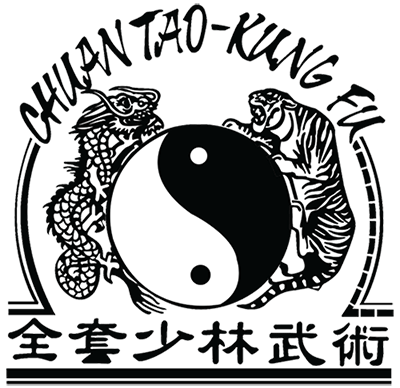Chin Na
Chin Na The Hidden Art
Whether a novice or master, a practitioner of Kung Fu will utilize Chin Na. It isn't an individual style of Chinese martial arts but more so a set of techniques, maneuvers and counters applied to an opponent in order to gain a physical advantage and neutralize the opponent's fighting ability. It is considered to be the true essence of all Kung Fu grappling.
Definition
Literally translated, Chin Na is a Chinese term that means the method of grabbing (Chin) and locking or breaking (Na). It focuses on the manipulation of an enemy's tendons, nerves, joints, bones and muscles to incapacitate. The two actions can be performed apart in training and self-defense, although they are commonly performed in that order (trap then lock). These skills can be applied while either standing or on the ground.
Application of Chin Na Techniques
Chin Na teaches how to read an opponent's intentions, body weaknesses, and the spatial orientation between a practitioner and an attacker. From there, the practitioner selects the appropriate leverage and application of force necessary for control. Interestingly, the same principles that are used to heal in Chinese physiotherapy (Tui Na) are used to harm in Chin Na.
The application of these maneuvers can effectively control an adversary by inflicting severe pain. Yet, Chin Na is considered a high level martial art since one may also choose to bring the opponent under control without seriously incapacitating him or her.
One hundred and eight skills are employed in Chin Na. Thirty-six are used to capture or control an attacker and the other 72 are used to grab or seize an opponent. An experienced practitioner is aware of where the point or area is located that gains the advantage; how hard to press or strike; how hard to grab; how long to hold; which angles for attack or defense; what hand technique(s) must be used, and which combinations of points will achieve the desired results.
Limitations of the Body
Each joint in the human body has its own limited range of movement. Chin Na effectively exploits these limitations to gain an advantage. Natural torque, or the most a joint can be locked before breakage occurs, is an extremely important part of Chin Na. A Kung Fu practitioner uses this knowledge to render an opponent incapacitated and unable to move. Even the smallest pressure past natural torque can neutralize an attacker.
The range of usage is completely discretionary of the person performing the lock. It can be applied gently to effectively control an opponent or instead be used to completely destroy an attacker's joint. Even if an attempt at a manipulation is lost, Chin Na affords one the knowledge of how to maneuver and move forward from this missed attempt, leading to regaining an advantage.
Repeated practice with various partners will increase proficiency of Chin Na skills. A thorough understanding of the human muscular, skeletal and nervous systems is also necessary for effective application. The many parts of Chin Na training must all be used in conjunction to achieve true expertise. It is this combined wisdom that allows for subduing an opponent without relying on brute force.
Categories of Chin Na
Chin Na can generally be categorized as:
"Fen Jin" or "Zhua Jin" (dividing the muscle/tendon or grabbing the muscle/tendon). Fen means "to divide, Zhua is "to grab" and Jin means "tendon, muscle, sinew. These are techniques used to tear apart an opponent's muscles or tendons, and/or separate muscles by applying pressing and/or pulling.
"Cuo Gu" (misplacing the bone). Cuo means "wrong, disorder" and Gu means "bone. Most of techniques applied in Chin Na will employ Cuo Gu. These are usually applied specifically to joints (also known as articulations) and places bones in unnatural positions. When a joint is manipulated against its natural range of motion, the tendons that attach the muscle to the bone are also affected. Overstretched tendons coupled with unnatural bending or twisting of the joint will cause pain. To control this pain, the practitioner simply maintains or increases the pressure that is applied against the attacker's joint. The joints that are most vulnerable are the wrist, elbow and shoulder. The lower limbs, thorax and throat may also contain joints susceptible to Chin Na techniques.
"Bi Qi" (sealing the breath). Bi means "to close, seal or shut" and Qi means "air. Utilizing the "Bi Qi" technique prevents the opponent from inhaling. Attacks are focused on the breathing passages, specifically the pharynx and the trachea, and may damage the larynx. It can be applied not only to the windpipe but also to the muscles surrounding the lungs, forcing the system to contract. This will impair breathing.
"Dian Mai" or "Dian Xue" (sealing the vein/artery or acupressure cavity). These techniques focus on sealing or striking blood vessels and chi points. This is considered the most advanced and secretive aspect of Chin Na, as it can be the deadliest. Many teachers are hesitant to teach these moves to forgo the risk of passing on this knowledge to irresponsible or unscrupulous students.
"Rou Dao" or "Rou Shu Dao" (soft techniques) are typically moves deemed safe for sparring and/or training purposes.
The Presence of Chin Na in Martial Arts
The various categories of Chin Na maneuvers are often found in other Asian martial arts such as Aikido, Jiu-Jitsu, Taekwondo and Judo. Chin Na may be practiced, to a greater or lesser degree, depending on the style of Kung Fu in question. Praying Mantis, Tiger Claw and Eagle Claw all emphasize Chin Na skills.
Once called the "Hidden Art, Chin Na was considered secret knowledge only taught to the most dedicated, deserving, and loyal students. In some accounts, Kung Fu masters never taught it as they felt no students were worthy of the great responsibility borne of the knowledge of such devastating techniques. Currently, there is no systemized form of Chin Na that is universally accepted. Instead, its teaching varies due to the instructor's training and/or personal preference of focus.

